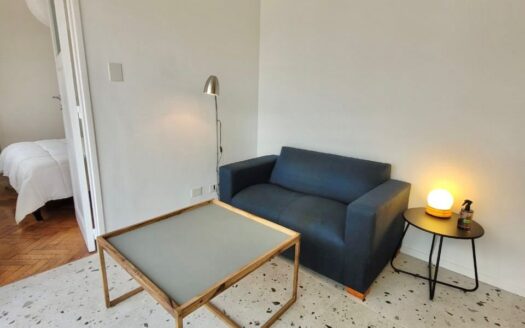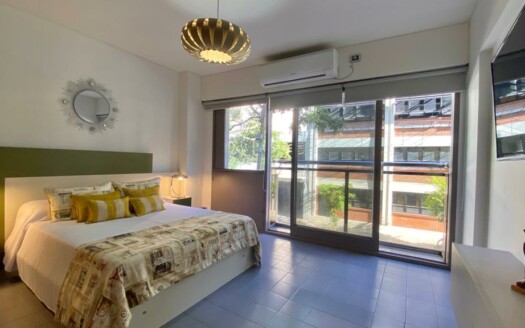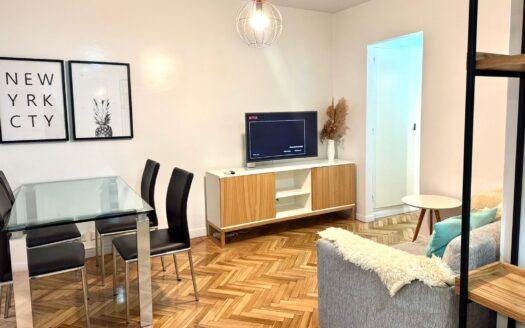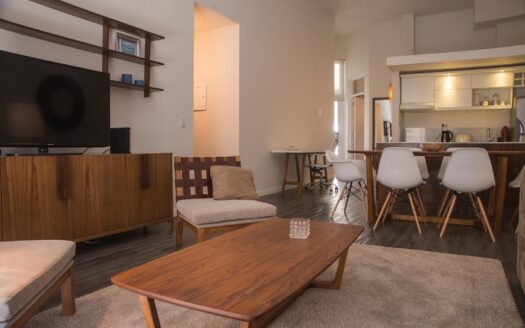Centro
Properties listed in Centro
Centro and Microcentro form the vibrant commercial and financial heart of Buenos Aires. This is where the city’s pulse is strongest, a bustling nexus of history, politics, and daily life. Defined by its iconic landmarks, grand avenues, and labyrinthine pedestrian streets, this area offers an unforgettable urban experience, blending the old-world grandeur of its historic buildings with the relentless energy of a modern metropolis.
- A Historic and Political Heartbeat: This area is home to some of Argentina’s most significant landmarks. The majestic Plaza de Mayo serves as the country’s political core, surrounded by the Casa Rosada (the presidential palace), the Cabildo, and the Metropolitan Cathedral. A short walk away, the Obelisco stands as the city’s most famous monument, marking the intersection of the world’s widest avenue, Avenida 9 de Julio, and Avenida Corrientes, the epicenter of theater and culture.
- Culture and Art: Microcentro is a cultural treasure trove. The world-renowned Teatro Colón is a masterpiece of architecture and acoustics, considered one of the top opera houses on the planet. The area is also filled with historic cafes and theaters that line Avenida Corrientes, offering a constant stream of shows and cultural events that make it the true Broadway of Buenos Aires.
- Shopping and Urban Life: This is the city’s primary commercial hub. Pedestrian streets like Calle Florida are famous for their high-street fashion, boutiques, and street artists. The area is always alive with a mix of office workers, tourists, and locals, creating a bustling and dynamic atmosphere that defines downtown Buenos Aires.
- Dining and Cafes: Microcentro offers a fantastic mix of dining options, from quick cafes to historic restaurants. For a taste of the city’s timeless elegance, a visit to Café Tortoni is a must. This legendary cafe, founded in 1858, is an institution where poets, artists, and tango legends once gathered. For a delicious meal, you can find traditional Argentine fare at classic spots tucked away on side streets.
- Connectivity: As the city’s central point, this area is the best-connected in Buenos Aires. It is a major transport hub, with multiple subway lines converging here (Subte A, B, C, D, and E) and a vast network of bus routes that connect to every part of the metropolitan area.
Length
- Length
- Daily
- Half-yearly
- Monthly
- Weekly
Categories
- Categories
- 1 Bedroom
- 2 Bedrooms
- 3 Bedrooms
- 4 Bedrooms
- 5 Bedrooms
- 6 Bedrooms
- Corporate
- Luxury Apartments
- Properties On SALE
- Studios
- Vacation Rentals
States
- States
- Argentina
Cities
- Cities
- Buenos Aires
- - San Isidro
- Ciudad De Buenos Aires
- Nuñez
- Olivos
- Saavedra
- Vicente Lopez
Centro
- Barrio
- Almagro
- Alto Palermo
- Barrio Norte
- Barrio Parque
- Belgrano
- Belgrano C
- Belgrano R
- Caballito
- Centro
- Chacarita
- Coghlan
- Colegiales
- Jardin Botanico
- La Lucila
- Las Cañitas
- Montserrat
- Nuñez
- Olivos
- Palermo
- Palermo Chico
- Palermo Hollywood
- Palermo Nuevo
- Palermo Soho
- Palermo Viejo
- Puerto Madero
- Recoleta
- Retiro
- Saavedra
- San Isidro
- San Telmo
- Vicente López
- Villa Crespo
- Villa Urquiza
Default
- Price High to Low
- Price Low to High
- Newest first
- Oldest first
- Newest Edited
- Oldest Edited
- Bedrooms High to Low
- Bedrooms Low to high
- Bathrooms High to Low
- Bathrooms Low to high
- Default
Completely renovated apartment, ideal for 1 to 2 people, bright, and with easy access to different areas of the cit ...
Advanced Search.
Latest Listings.
Macchiato Flat 1 BR + Office Apart ... U$S 1,800Palermo Heights – 1.5 BR with... U$S 1,700Sky Clear- Large & delightful ... U$S 2,500BE Newbery Living – Bright 1BR with... U$S 1,050Select Currency.
U$D- U$D
- $
- €
-
Latest from our Blog.
- 7 Days in Buenos Aires 26 September, 2023
- ¿Cómo Equipar Propiedades y Apartamentos Para Alquiler Temporario? 11 October, 2021
- Cost of Living in Buenos Aires Compared to Cities 2021 11 October, 2021
- Everything you need to know about the “Asado Argentino” 13 March, 2020
- The Porteño Lifestyle 11 March, 2020









